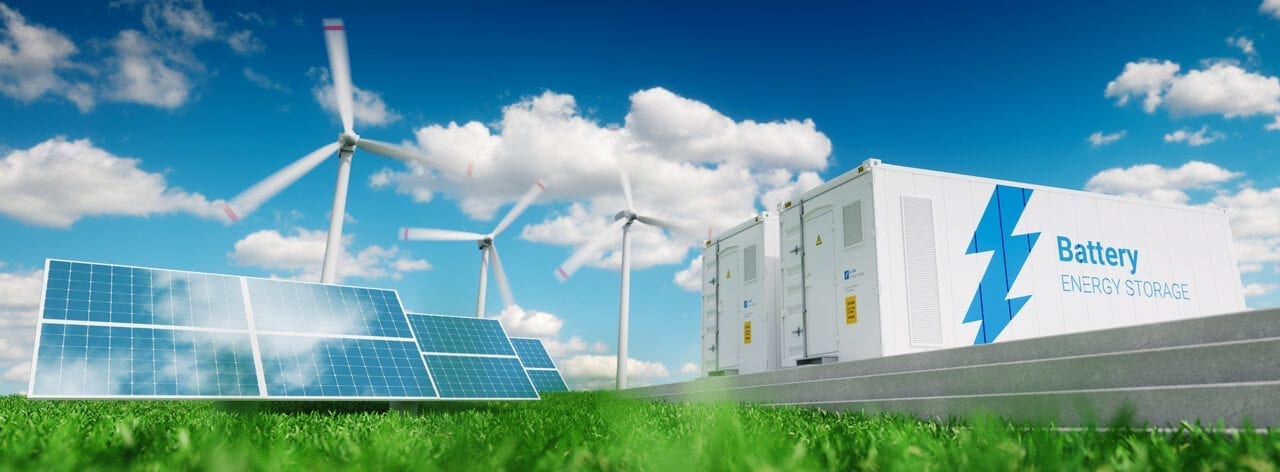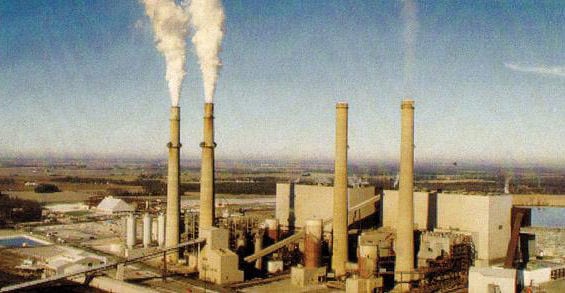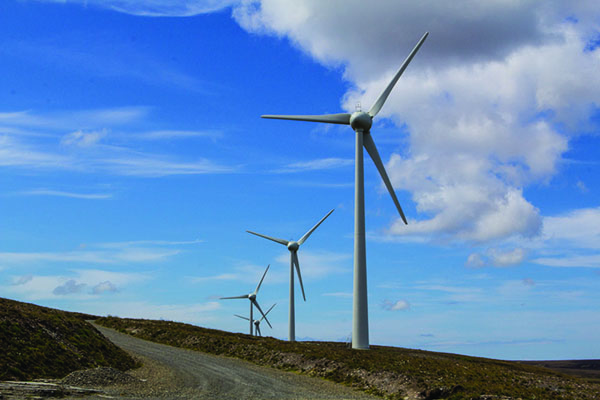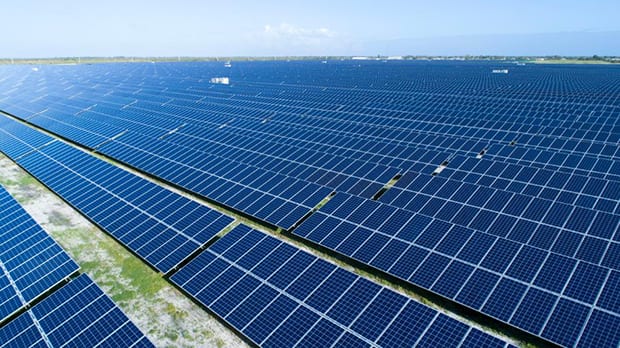Hitachi ABB Power Grids’ Report Highlights Greening of the Grid
The post Hitachi ABB Power Grids' Report Highlights Greening of the Grid appeared first on POWER Magazine.

The use of coal for North American power generation will continue to decline, natural gas will continue as the leading source of power, and the use of renewable resources to provide electricity will continue to grow, according to a report from Hitachi ABB Power Grids.
The outlook, titled North America Power Reference Case: Spring 2020" and made publicly available Sept. 17, projects that renewable energy will experience double-digit growth across the next 25 years. It forecasts a 50% drop in North American coal-fired power generation during the same period, citing economics as the largest factor in coal's decline.
The report said more than 107 GW of coal-fired generation will be retired (Figure 1), with at least a third of that generation-37 GW-shuttered primarily due to poor economics between now and 2044. The analysis says natural gas will continue as the leading source of power generation during the period.
 1. A report released Sept. 17 from Hitachi ABB Power Grids says about half of the coal-fired generation capacity operating in North America today will be shuttered by 2044. That includes the last four coal-fired units at the Schahfer Generating Station in Wheatfield, Indiana, which are expected to close by 2023. Courtesy: NIPSCO
1. A report released Sept. 17 from Hitachi ABB Power Grids says about half of the coal-fired generation capacity operating in North America today will be shuttered by 2044. That includes the last four coal-fired units at the Schahfer Generating Station in Wheatfield, Indiana, which are expected to close by 2023. Courtesy: NIPSCOThe report draws upon data compiled by Hitachi ABB's energy intelligence service, Velocity Suite, which has been informed by its proprietary capacity expansion model, and its well-established PROMOD production cost model.
By 2044, North America's dependency on fossil fuel-based energy sources will be a fraction of what it is today," said Greg Toothaker, vice president, Energy Portfolio Management at Hitachi ABB Power Grids, in a news release Thursday. Combined, the global pandemic and the oil price shock have led to a forecasted 20% decrease in overall energy spending for 2020, whilst major oil companies have left capital investments in renewables untouched, thus reinforcing the future of sustainable energy in North America."
Investments in Renewables GrowOil and gas majors are investing in renewable energy, while other investors move away from fossil fuels and put their money into solar and wind projects.
Thursday's report cites several factors for its conclusions, saying that declining capital costs and overlapping state, utility, and corporate clean-energy priorities and regulations will drive power generation strategies in the coming years. The analysis says renewable energy and natural gas are expected to dominate North American power generation for at least the next 20 years, with solar forecast to grow fourfold from now until 2044, at that point generating twice the electricity that coal produces today.
Wind generation is expected to reach 191 GW, or about double what coal is expected to supply in 2044. Current wind generation capacity is about 115 GW (Figure 2).
We're seeing higher investments in renewables [solar PV, distributed generation- solar PV, onshore wind, offshore wind] and energy storage [including co-located and hybrid] projects due to policy support [tax credits, renewable portfolio standards] at the federal and state levels and lower costs of deployment for these resources," Shilpa Kokate, Advisory Director Eastern U.S. for Hitachi ABB Power Grids, told POWER.
The report lists several key highlights, including that natural gas will help drive investment in renewable energy technology. The analysts say that cheap natural gas prices-forecast to remain below $4/MMBtu until the early 2030s-and natural gas' ability to supplement intermittent renewable energy at times of higher demand, will speed investment in solar and wind. The report forecasts that natural gas will supply more than 43% of North American power consumption by 2044, up from about 41% today, with gas regarded as a stop-gap" solution for renewables.
 2. A report from Hitachi ABB Power Grids says wind power has the potential to produce 191 GW of power in 2044, up from about 115 GW today. Courtesy: POWER archives
2. A report from Hitachi ABB Power Grids says wind power has the potential to produce 191 GW of power in 2044, up from about 115 GW today. Courtesy: POWER archives Natural gas projects will continue to act as bridge resources until new, low-carbon technologies gain momentum in the marketplace and help states achieve their aggressive net-zero carbon goals," Kokate told POWER.
The report also addresses energy industry impacts from the COVID-19 pandemic. The analysts expect load growth for power will rebound in 2021, after a 2020 when load growth is expected to be about 5% lower on average across all regions compared to pre-economic downturn forecasts. The report also notes that the oil and gas industry, greatly impacted by lower demand during the pandemic, will recover by 2023.
Costs to build renewable energy projects also are expected to fall. The predicts that construction costs for onshore wind will drop by 2% year-over-year, each year to 2030. Solar construction costs in 2044 are expected to decline to about $1,100/kW, falling from the current cost of $1,400/kW. The report says investment in renewable energy becomes even more attractive when combined with a forecast 4.5% drop in certain battery energy storage systems, which are expected to be part of most renewable energy projects moving forward.
Capacity Build and Generation ForecastThe report forecasts that renewable energy projects will lead the buildout of power generation capacity, accounting for more than 60% of new-builds by 2044 thanks to declining costs, along with government mandates and utility and corporate clean-energy goals. There is still room for new capacity additions of natural gas-fired generation, with capacity expected to grow from 499 GW this year to 646 GW in 2044.
 3. Solar power is expected to continue its upward growth trajectory over the next several years, with Hitachi ABB Power Grids forecasting about 250 GW of generation capacity installed in North America in 2044-four times the current capacity. Courtesy: Florida Power & Light
3. Solar power is expected to continue its upward growth trajectory over the next several years, with Hitachi ABB Power Grids forecasting about 250 GW of generation capacity installed in North America in 2044-four times the current capacity. Courtesy: Florida Power & LightSolar power generation capacity, as mentioned earlier, is expected to grow fourfold (Figure 3), from 60 GW today to about 250 GW in 2044, with the largest gains in the U.S. Midwest and the Western Electricity Coordinating Council (WECC) regions. The WECC includes 14 states, two Canadian provinces, and northern Baja Mexico.
The decline in North American coal-fired generation capacity is stark. The report notes that as recently as 2010, coal contributed 1,915 terawatt hours (TWh) accounting for about 44% of all generation. This year, coal is expected to contribute 646 TWh or about 17% to the power generation mix."
And that decline will continue. The report forecasts a drop in coal-fired generation capacity from about 218 GW today, to about 111 GW by 2044.
Kokate told POWER she is not aware of anyone who still thinks coal is a good investment, due to environmental regulations, low natural gas prices and lack of policy support."
-Darrell Proctor is associate editor for POWER (@DarrellProctor1, @POWERmagazine).
The post Hitachi ABB Power Grids' Report Highlights Greening of the Grid appeared first on POWER Magazine.